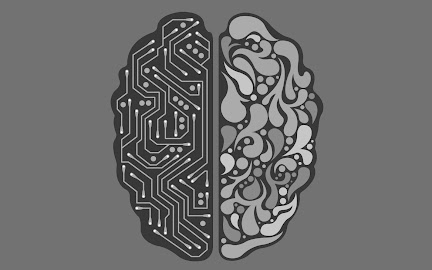''How AI Works: A Technical Deep Dive into the World of Artificial Intelligence''
Artificial intelligence (AI) is a branch of computer science that is dedicated to creating intelligent systems that can learn and perform tasks that typically require human intelligence. At its core, AI is based on the idea of training algorithms to recognize patterns in large amounts of data and use that information to make decisions or predictions.
The process of training an AI algorithm typically involves the following steps:
Data Preparation: The first step in training an AI algorithm is to gather and preprocess a large dataset that the algorithm can use to learn from. This may involve cleaning the data, removing any inconsistencies, and normalizing the values to ensure that the algorithm can understand them.
Algorithm Selection: Once the data has been prepared, the next step is to select an appropriate algorithm that can learn from the data. The choice of algorithm will depend on the type of problem that needs to be solved, and the specific characteristics of the dataset.
Training: During the training process, the algorithm is presented with the dataset and uses it to update its internal parameters. The algorithm will typically be run through multiple iterations or epochs, each time adjusting its internal parameters to better fit the data.
Validation: Once the algorithm has been trained, it is important to test it on a separate set of data to ensure that it can generalize well and perform well on new data that it has not seen before.
Deployment: After the algorithm has been trained and validated, it can be deployed to perform its intended task. This may involve integrating it into a larger system, such as a self-driving car or a recommendation engine.
AI algorithms can be divided into several categories, including:
Supervised Learning: In supervised learning, the algorithm is trained on a dataset that has labeled examples. These labels provide the algorithm with the correct output for each input, allowing it to learn to predict the correct output for new data.
Unsupervised Learning: In unsupervised learning, the algorithm is trained on a dataset that has no labeled examples. Instead, the algorithm must find patterns and structure within the data on its own.
Reinforcement Learning: In reinforcement learning, the algorithm learns by receiving feedback in the form of rewards or penalties for certain actions. The algorithm is then able to adjust its behavior to maximize the rewards it receives.
Some common applications of AI include image recognition, natural language processing, and predictive analytics. Image recognition algorithms can be used to identify objects and people within images, while natural language processing algorithms can be used to understand and interpret human language. Predictive analytics algorithms can be used to forecast future events or outcomes based on historical data.
In conclusion, AI is a complex field that requires expertise in mathematics, statistics, and computer science. By training algorithms on large amounts of data, we can create intelligent systems that can perform a wide range of tasks. As AI technology continues to advance, we can expect to see even more powerful and groundbreaking innovations in the future.












Comments
Post a Comment